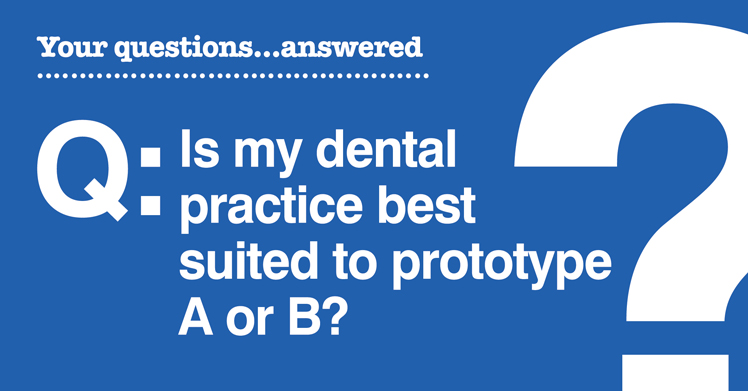From April 2020 the new general dental contract for England will begin being rolled out. Several questions remain about how exactly that will happen, one of which is whether practice owners will be able to choose which prototype contract they take on, or whether they are assigned to a particular one.
The practices involved with the prototype programme are testing different blends of remuneration:
Prototype A – capitation is used as the basis for band one treatments, and activity for band two and three treatments.
Prototype B – capitation is used as the basis for band one and two treatments, and activity is used as the basis for band three treatments.
At recent What Next for NHS Dentistry? events held by Practice Plan, the BDA and the Association of Dental Groups (ADG) said that their preferred option would be blend B. However, during the events which involve a panel discussion of dentists, those involved in the prototype programme and leaders in the profession, it also became clear that it is not yet known whether practices will be able to choose which prototype they want, or whether they will be given either A or B.
Whether it is a matter of choice or not, in order to prepare for contract reform it is vital that dentists begin thinking about which contract would best suit their practice. In order to explore this issue, I asked Ian Redfearn, owner of a prototype A practice and panellist on the first What Next for NHS Dentistry? event, how can dentists know: Is my practice better suited to a prototype A or B contract?
Ian: ‘Practices are still faced with numerous ‘unknowns’ regarding the new NHS contract, including the exact date of its introduction. Will there be a choice regarding participation? Will there be a choice between type A and B? How will any new targets, such as capitation numbers, UDA targets and UDA value, be calculated? Will there be activity measures in addition to UDAs?
The current contract, flawed though it clearly is, at least has the clarity of one target – ‘X’ UDAs by March 31st. A new contract will have several targets to hit: activity (UDAs), registered patients (capitation list) and possibly a number of other Key Performance Indicators (KPIs). As a type A prototype practice, we have found keeping all these plates spinning a challenge. For example, as we’ve taken on new patients their additional clinical needs have resulted in a risk of over-delivery on UDAs and a knock-on effect on waiting times for treatment.
Practice owners need to consider several factors when faced with these future options. The following issues will need careful consideration:
What is my current patient base?
If you have a relatively large list of well-maintained, low-needs patients, then a contract weighted towards prevention and maintenance may suit you more. That being said, we can all expect that access is king and it is likely that you will be expected to take on new patients.
What is the likely demand for new dental services?
Some practices are having to make increasing efforts to attract new patients to deliver their current contractual requirements. A new contract that is more weighted to patient numbers (blend B) may be more challenging in these circumstances.
Do I work in a high-needs area?
If patients need more active treatment, a contract that favours activity may suit you better. That being said, the greater emphasis on prevention, as a consequence of the clinical pathways being tested in the prototypes, will have implications for any expanded patient base.
What is my current practice team?
And, are there opportunities to change this? Any new contract will, I believe, favour a practice with an expanded range of clinicians. Therapists are going to become very popular in this brave new world, as well as other Dental Care Professionals with expanded duties. Are you in a position to exploit this? Larger practices may be better able to exploit these opportunities, but I personally believe that a one dentist/one therapist model is perfectly viable.
What is my current practice culture?
By this I mean, do you have a team that will rise to the challenge of change and working in different ways? Are you already prevention-orientated? If the answer is no, then a contract that favours activity may work better for you.
Are my associates currently focused solely on their individual UDA targets?
Any new contract will have big implications for associates. How open will they be to working with other team members? I believe a new contract will result in a number of challenges to the current associate model and principals will have to consider alternative models regardless of which type of contract you choose, or which type is imposed.’
Thanks to Ian for sharing his insight into what is required to run a practice within the prototype parameters, and for providing dentists with an idea of the kinds of questions they need to be asking themselves.
It’s just a little over nine months to go before the new NHS contract begins being rolled out, so now really is the time to start thinking about what this could mean for your practice and begin planning accordingly.
